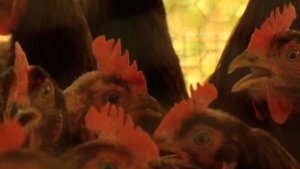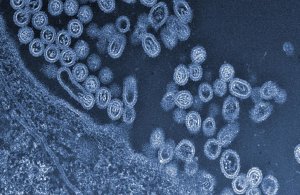WASHINGTON (AP) — Scientists who sparked an outcry by
creating easier-to-spread versions of the bird flu for research purposes
want to try such experiments again using a worrisome new strain. This
time around, the U.S. government is promising extra scrutiny of such
high-stakes research up front.
Since it broke out in China in
March, the H7N9 bird flu has infected more than 130 people and killed
43. Some of the world's leading flu researchers argue that genetically
altering that virus in high-security labs is key to studying how it
might mutate in the wild to become a bigger threat to people, maybe even
the next pandemic.
"We cannot prevent epidemics or pandemics, but
we can accumulate critical knowledge ahead of time" to help countries
better prepare and respond, Ron Fouchier of Erasmus University in the
Netherlands told The Associated Press.
In letters published
Wednesday in the journals Science and Nature, Fouchier and colleagues
from a dozen research centers in the U.S., Hong Kong and Britain
outlined plans for what's called gain-of-function research — creating
potentially stronger strains, including ones that might spread easily
through the air between lab animals. They say the work could highlight
the most important mutations for public health officials to watch for as
they monitor the virus' natural spread or determine how to manufacture
vaccines.
The announcement is an attempt to head off the kind of
international controversy that erupted in 2011 when Fouchier and
Yoshihiro Kawaoka of the University of Wisconsin, Madison, created
easier-to-spread strains of another deadly kind of bird flu, the
better-known H5N1. The concerns: How to guard against laboratory
accidents with the man-made strains, and whether publishing findings
from the research could offer a blueprint for would-be bioterrorists.
The H5N1 work eventually was published.
Now
the researchers aim to explain to the public ahead of time why they
want to do more of this scary-sounding research, and how they'll manage
the risks.
The Obama administration already had tightened
oversight of research involving dangerous germs. Wednesday, the U.S.
Department of Health and Human Services announced an extra step: In
addition to scientific review, researchers who propose creating
easier-to-spread strains of the new H7N9 will have to pass a special
review by a panel of experts who will weigh the risks and potential
benefits of the work.
"There are strong arguments to do the
science," but it has to be done properly or not at all, said Dr. Anthony
Fauci of the National Institutes of Health, which will refer such
projects to the special HHS panel.
"It's not a rubber stamp,"
Fauci said. "If the risk is felt to be too high by this outside review,
they will recommend it won't be done and we won't fund it."
The
extra oversight is for federally funded researchers; there is no way to
know what privately funded research may be in the works.
The steps don't satisfy critics.
The
findings from the earlier man-made H5N1 strains haven't changed how
health authorities are monitoring that virus in the wild, said
University of Minnesota professor Michael Osterholm, who was on the
federal advisory board that first sounded the alarm over the issue. Nor
is there scientific evidence that the mutations that seem most dangerous
in the lab really could predict an impending pandemic.
"H5N1
surveillance is as haphazard today as it was two years ago," said
Osterholm, who said Wednesday's announcement overstated the potential
benefits of such research and minimized the risks. "Should we do the
work if it's not actually going to make a difference?"
Scientists
have anxiously monitored bird flu for years, but so far the deadliest
strains of concern only occasionally sicken people, mostly after close
contact with infected poultry. The H5N1 strain has sickened more than
600 people and caused 377 deaths, mostly in Asia, since the late 1990s.
Infections
by its newly emerged cousin, the H7N9 virus, appear to have stalled
since Chinese authorities cracked down on live animal markets. But
scientists fear the virus will re-emerge in the winter, when influenza
is most active. Chinese scientists announced this week that two of the
earlier deaths included a woman who apparently caught the virus while
caring for her ill father, the strongest evidence yet that it
occasionally can spread among people.




No comments:
Post a Comment